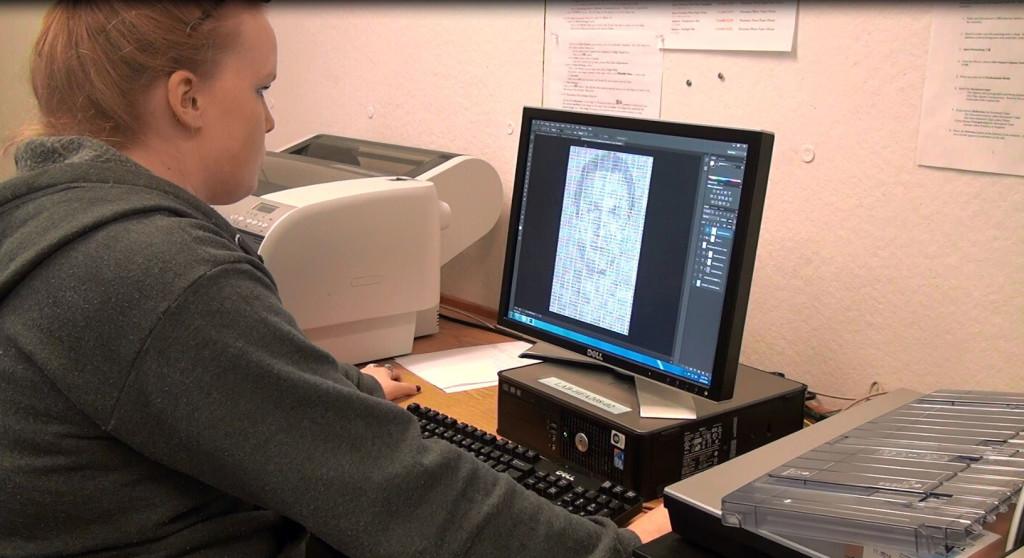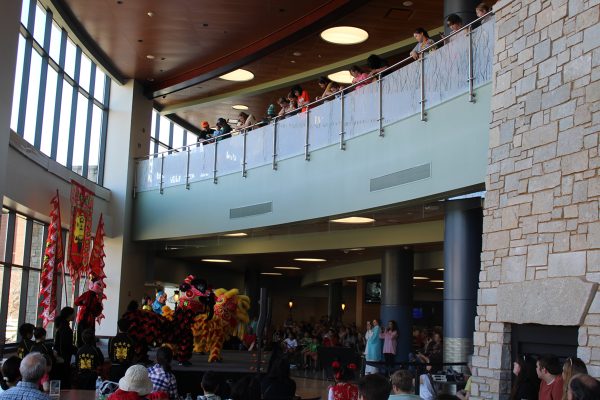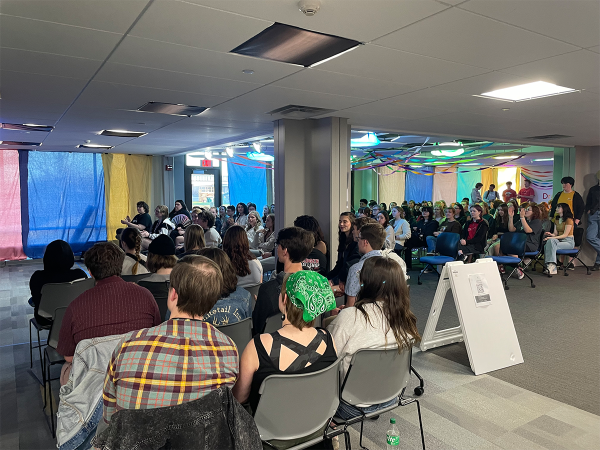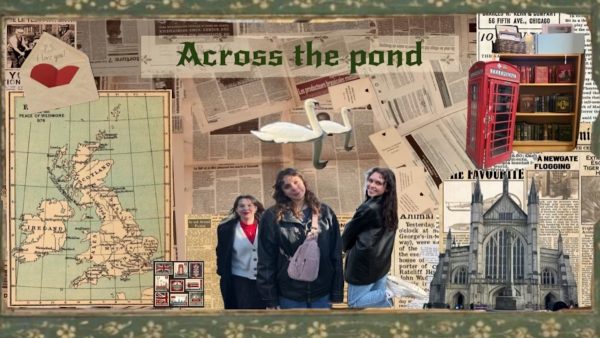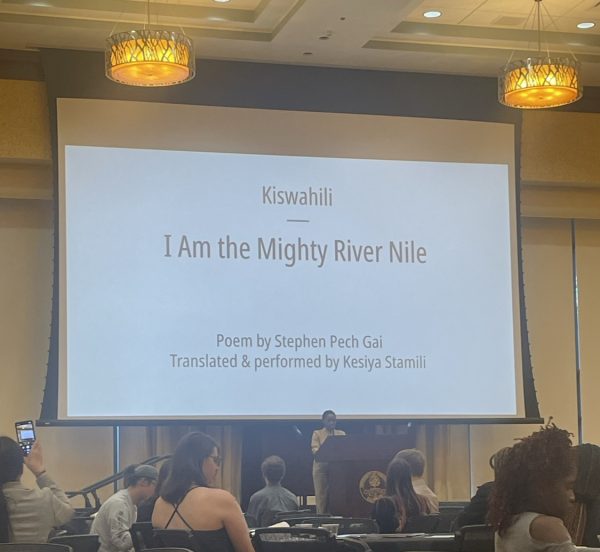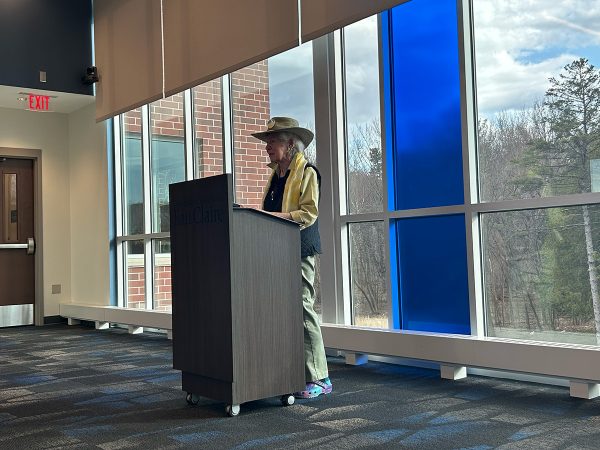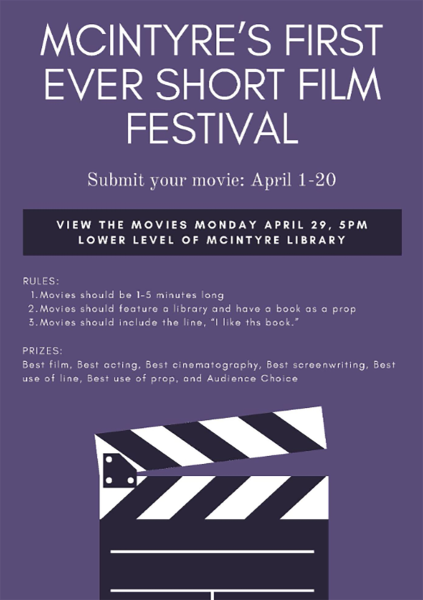Crunching the numbers
Student incorporates technology into her art, series focuses on loss of identity
Photo by Danielle Pahl
X’s AND O’s: Senior Betsy Olaussen edits a picture for an art project she’s working on, which focuses on society’s dependency on technology. © 2014 Danielle Pahl
March 26, 2014
In a typical day, how often do you use technology? A lot, right? How long do you think you could live without it? Could you resist it for a day? Even a few hours? How did we become so addicted?
For senior fine arts major Betsy Olaussen, questions like these inspired her current project. Her work focuses on how she sees the public’s relationship with technology and how it consumes our identity.
“My work has revolved around the advancements of technology and how it is affecting our generation’s lives and how involved we are with the technological devices that we’re connected to everyday,” Olaussen said. “I have been really observing people and how often they are involved with people face-to-face or how absorbed they are on their phones or tablets and whatnot.”
Olaussen said she first started thinking about this concept more than a year ago, and it sparked from a previous work – focusing on identity loss.
After further research, she chose the focus of her project to convey this idea through a series of portraits that will be overlaid with binary code.
“All of the information we put online and everything about us can be reduced down to ones and zeros,” Olaussen said. “The person that is going to be in the portraits, I am going to use their actual information. This is anything about them, like credit card numbers, social security numbers, their birthdate, where they are from, how old they are, basically just numbers and words that are used to identify yourself.”
Olaussen said her series will feature six to seven portraits that will be printed on transparent paper. As the series goes on, the portrait of the person will slowly fade and the binary code will take over the image. Olaussen said this transition represents how our involvement with technology consumes us.
“You are going to get different views of either the person or the code,” Olaussen said. “Or if you look through it, you can see it all at once. In the middle of the series is where you are going to see both the person and the code, which represents our existence.”
The series, Olaussen said, is for her senior show which she will install in the Foster Art Gallery April 28. She said this has been her most ambitious project and the biggest struggle in completing was the decision-making process.
She said the process has involved a lot of experimentation in figuring out how she wants the viewer to see the work and how to evoke emotion from the viewer.
“The more we become more involved with technology, our physical being is like our identity,” she said. “It will slowly disappear and our identities will solely exist online.”

